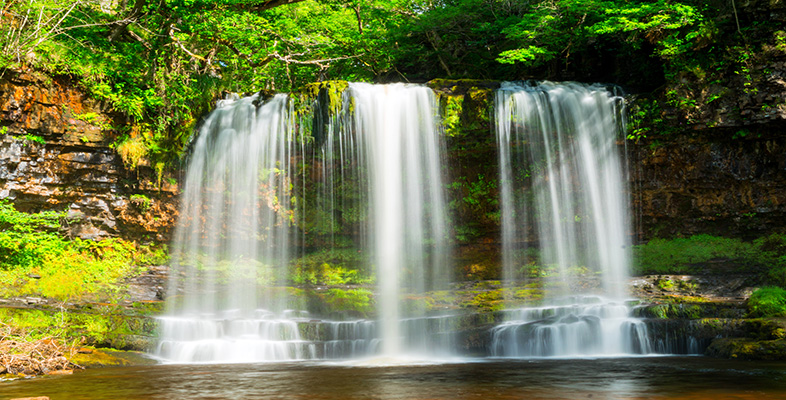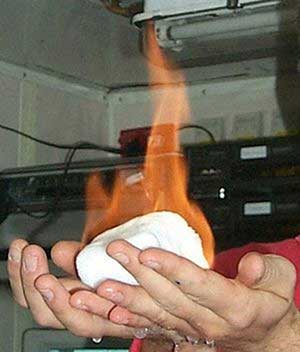5.5 Methane trapped in ice
Another potentially significant source of methane in the Arctic is trapped in the shallow seabed of the Arctic Ocean and is called methane clathrate (Figure 34). A clathrate is a lattice that contains other molecules, and methane clathrate is ice that has methane trapped within the crystal matrix. As the ocean warms, the release of large quantities of methane into the atmosphere from clathrates would be yet another positive feedback. This has been called the ‘clathrate gun hypothesis’ and it could lead to a strong amplification of the greenhouse effect that may have happened before in deep time. It could even have been responsible for previous mass animal extinctions.
Currently, it is thought that some methane is indeed being released from clathrates due to climate change, but also that it is very unlikely that there will be a catastrophic release in the 21st century. However, it could be a substantial effect over the following hundreds to thousands of years.
Activity 14 Arctic feedbacks
What is the particular importance of feedback processes in the context of climate, particularly with respect to the Arctic?
Answer
There are probably many positive and negative feedback processes associated with climate, but in the Arctic, changes in ice cover are a particularly good example of positive feedback, as is the role of methane. Reduction of ice cover changes the albedo so that more heat is absorbed, warming the water and reducing ice cover still further. As the permafrost melts, it may release methane, a powerful greenhouse gas, potentially raising global temperature and causing further melting of permafrost and release of methane. On the other hand, the possible effect of ice melt on the ocean currents could provide a form of negative feedback. If the warm current flowing north past north-west Europe were to cease, then this would produce a major cooling effect. Currently, it is thought that this would not completely compensate for the warming, at least in the 21st century, but this is an interesting open question.
It is ironic that anthropogenic climate change driving sea ice and permafrost retreat means that more oil, coal and gas fields are becoming accessible.

